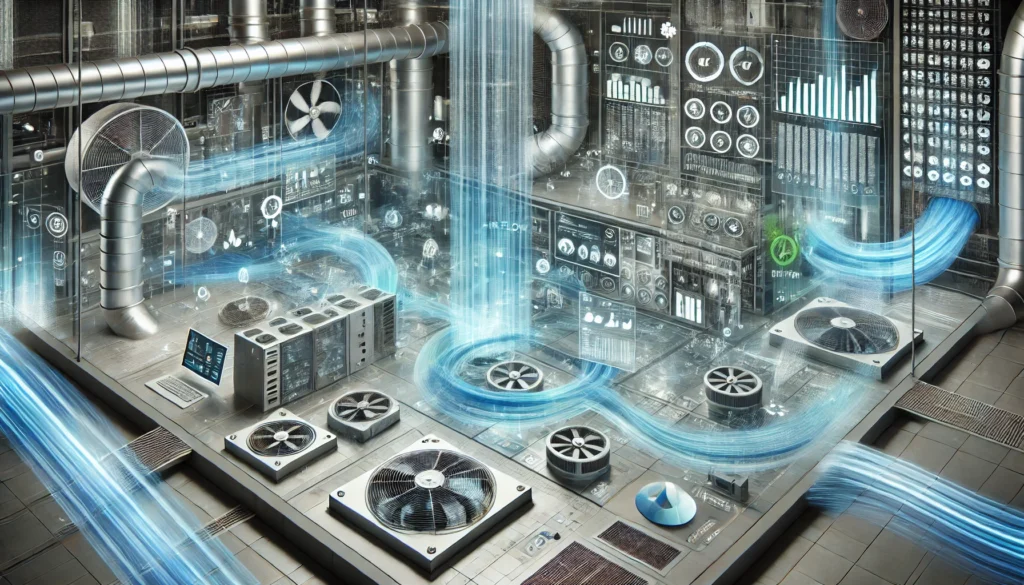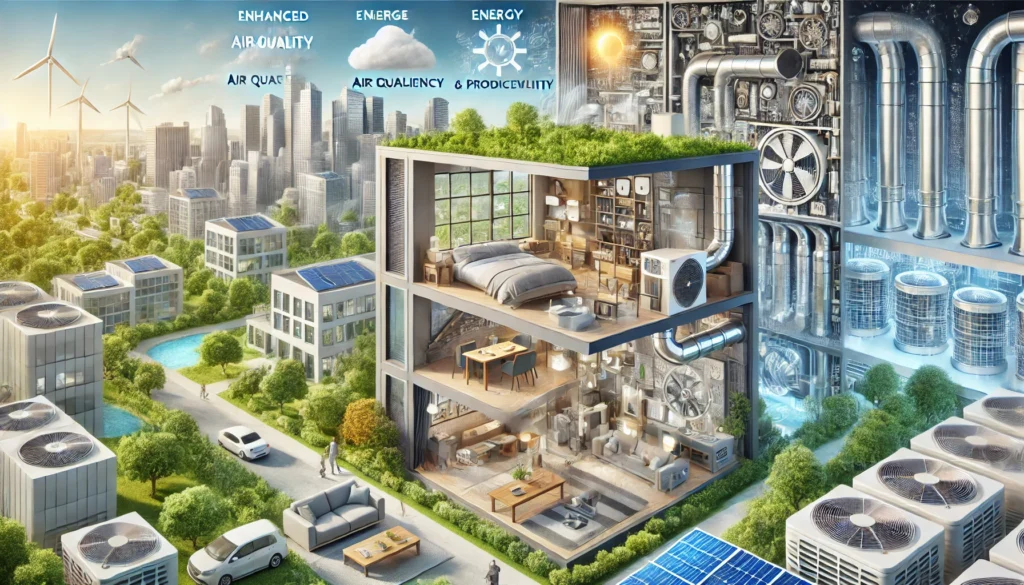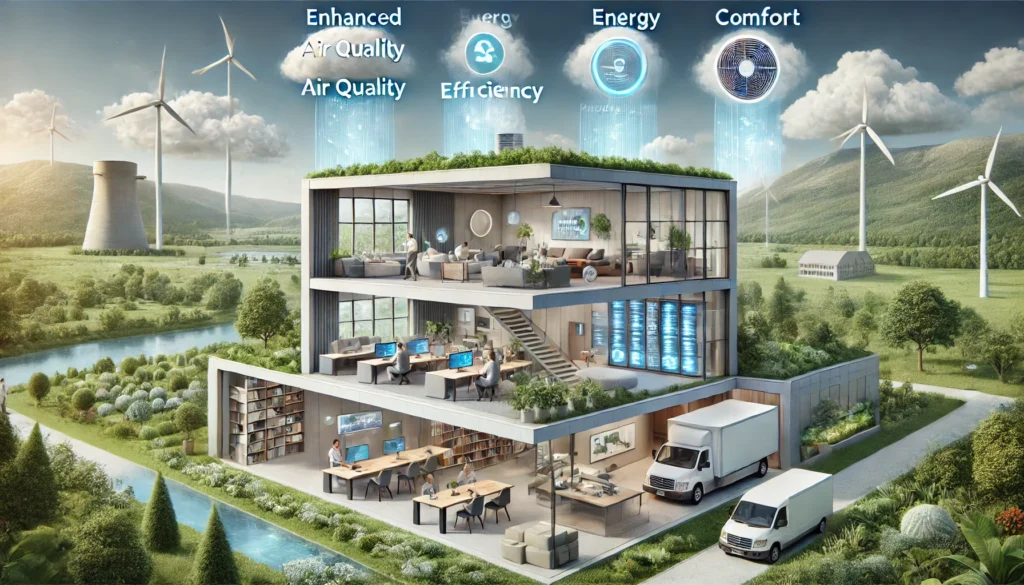Airflow technology is crucial in regulating airflow in various environments, especially homes, offices, and industrial settings. This technology enhances ventilation systems, ensuring air circulates properly to maintain a comfortable, healthy atmosphere.
At its core, airflow technology involves using mechanical and automated systems to control air movement. These systems are designed to ensure that air is distributed efficiently, providing optimal air quality while minimizing energy consumption. Through advanced air distribution methods, airflow technology can increase comfort levels, reduce energy costs, and improve the overall quality of the indoor environment.
How Air Flow Technology Works
The main function of airflow technology is to control how air moves through space. This involves using fans, ducts, and other mechanical components that direct air where needed. The technology is integrated into heating, ventilation, and air conditioning (HVAC) systems to optimize airflow based on specific needs.
The key to efficient airflow lies in designing systems that adjust airflow based on environmental factors. For example, air flow systems can monitor room temperature, humidity, and even the presence of pollutants in the air, allowing them to adapt to changing conditions. By doing this, they ensure that air is distributed evenly across the space, improving both comfort and energy efficiency.

Benefits of Air Flow Technology
Enhanced Air Quality
One of the primary benefits of airflow technology is its ability to improve air quality. By regulating air movement, these systems prevent the buildup of dust, allergens, and mould spores. This ensures that the air remains fresh and breathable, which is especially important for individuals with respiratory issues or allergies.
Energy Efficiency
Traditional HVAC systems often waste energy by overcooling or over-heating rooms in order to maintain a consistent temperature. Air flow technology, however, ensures that air is distributed efficiently, reducing the need for excessive heating or cooling. This can lead to significant savings on energy bills, making air flow technology an eco-friendly and cost-effective solution.
Comfort and Productivity
Proper air circulation is essential for maintaining comfort in both residential and commercial spaces. When air is distributed efficiently, it creates a more consistent temperature throughout the room, eliminating hot or cold spots. This is particularly beneficial in office environments, where employee comfort directly impacts productivity.
Sustainability
Airflow technology also supports sustainable living by reducing energy consumption. With more efficient air circulation, less energy is required to heat or cool a space, leading to lower carbon footprints. Additionally, some systems incorporate renewable energy sources, such as solar-powered fans, to further minimize environmental impact.

Applications of Air Flow Technology
1. Homes and Residential Areas
In residential settings, air flow technology helps maintain a comfortable living environment. By optimizing the way air circulates through the home, these systems help reduce the need for excessive heating or cooling. This is particularly important in regions with extreme temperatures, where managing airflow can help keep energy costs in check.
2. Office Spaces and Commercial Buildings
Efficient airflow in office spaces is critical to ensuring a productive and comfortable environment. In addition to regulating temperature, proper airflow helps to prevent the buildup of stale air, reducing the risk of illness and enhancing employee well-being. Many businesses are now adopting airflow technology to create healthier workspaces and boost productivity.
3. Industrial and Manufacturing Facilities
In industrial settings, airflow technology is vital for ensuring a safe and comfortable working environment. Ventilation systems are crucial in preventing the buildup of harmful fumes, gases, or dust particles that can pose a risk to workers’ health. Additionally, airflow technology can help maintain temperature control in manufacturing environments, improving both product quality and worker safety.
4. Healthcare Facilities
Hospitals and healthcare centres are particularly reliant on airflow technology. These facilities require advanced ventilation systems to maintain a sterile environment, prevent the spread of infectious diseases, and ensure the comfort of patients. Airflow technology in healthcare settings helps to reduce the transmission of airborne pathogens, making it a critical aspect of infection control.
How Air Flow Technology Improves Energy Efficiency
One of the most significant advantages of airflow technology is its ability to improve energy efficiency. Traditional ventilation systems often use fixed-speed fans and require constant adjustments to regulate temperature. These systems can lead to wasted energy as they either over-ventilate or under-ventilate spaces.
With airflow technology, systems are equipped with sensors that monitor factors such as temperature, humidity, and air quality. These sensors help regulate the airflow, ensuring that the right amount of air is distributed based on the current needs of the space. This approach reduces energy waste and ensures that the system operates at peak efficiency.

Future of Air Flow Technology
The future of air flow technology looks promising, with continued advancements in smart systems, automation, and energy-efficient designs. One trend that is gaining traction is the integration of air flow technology with IoT (Internet of Things) devices. These systems allow users to control airflow through smartphone apps, providing greater flexibility and control over indoor air quality.
Additionally, as more buildings adopt sustainable practices, there will be an increased focus on using renewable energy sources, such as solar power, to drive airflow systems. This shift toward clean energy will further enhance the eco-friendly benefits of airflow technology.
Conclusion
In conclusion, airflow technology is revolutionizing the way we manage indoor air quality, comfort, and energy efficiency. By providing efficient ventilation solutions, this technology enhances the overall living and working experience, ensuring better health, lower energy bills, and more sustainable environments. As this technology continues to evolve, it will play an increasingly important role in shaping the future of our homes, offices, and industrial facilities.
FAQs About Air Flow Technology
What is the main purpose of airflow technology?
Air flow technology is designed to improve the movement of air in indoor environments, optimizing ventilation, enhancing air quality, and improving energy efficiency.
How does air flow technology help with energy savings?
By efficiently regulating the distribution of air based on temperature, humidity, and air quality, air flow technology reduces the need for excessive heating or cooling, leading to energy savings.
Can air flow technology improve air quality?
Yes, airflow technology helps improve air quality by ensuring that fresh air is circulated properly, preventing the buildup of pollutants and allergens.
Is airflow technology only used in commercial spaces?
No, airflow technology is used in residential, commercial, and industrial spaces to improve air circulation, comfort, and energy efficiency.
How does air flow technology impact productivity in offices?
Proper airflow creates a comfortable working environment by regulating temperature and preventing the buildup of stale air, which can lead to increased productivity and employee satisfaction.
What are the future trends in air flow technology?
The future of airflow technology involves smart systems, IoT integration, and sustainable energy sources such as solar power, all of which aim to optimize energy efficiency further and improve indoor air quality.



